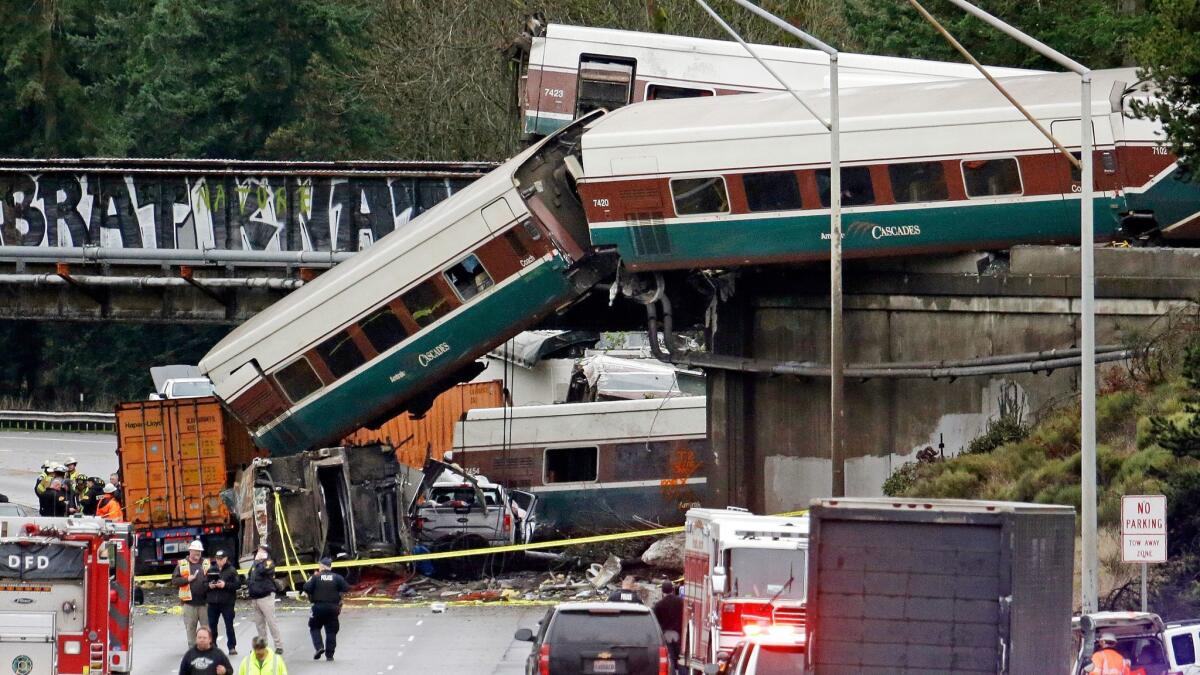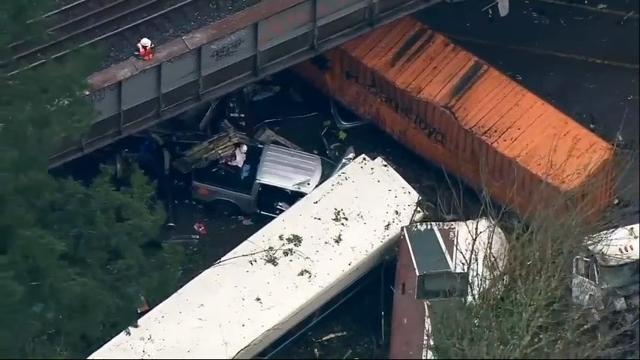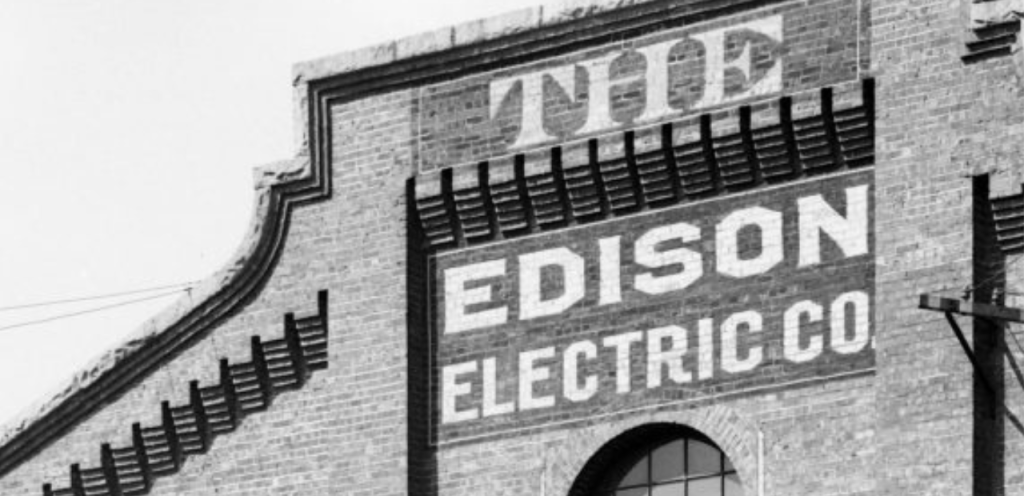The Amtrak engineer failed to notice speed-limit signs before the derailment, as reported by the NTSB. The incident occurred in Austin, Texas, United States, raising concerns about safety protocols and vigilance in train operations.
The recent Amtrak derailment in Austin, Texas, has brought attention to the critical role of engineers in ensuring safe train travel. The NTSB’s findings revealed that the engineer did not observe speed reduction signals before the accident. This incident highlights the importance of constant vigilance and adherence to safety protocols in the operation of passenger trains.
We will delve into the factors leading to the derailment, the NTSB’s investigation findings, and the implications for train safety moving forward.
The Engineer’s Observation
The Amtrak Derailment Engineer in Austin, Texas, noticed high speed just before the crash, raising concerns about speed limits. Reports indicate the engineer missed speed-limit signs, highlighting potential distractions or oversights. The investigation into the incident is ongoing.
Noticing High Speed
The Amtrak derailment that took place in DuPont, Washington, on December 18, 2017, was a tragedy that resulted in the death of three people and injured dozens more. However, the National Transportation Safety Board (NTSB) investigation revealed that the engineer did notice the train was traveling at a high speed before the accident. The engineer of the train, who was a veteran with Amtrak, told investigators that he realized the train was going faster than it should be as it entered a curve.
Response To Over Speed Condition
The NTSB report revealed that the engineer applied the emergency brakes, but it was too late to prevent the derailment. The train was traveling at 78 mph in a 30-mph zone at the time of the derailment. The investigation also found that the train was equipped with a Positive Train Control (PTC) system, which could have automatically slowed down the train in the over-speed condition. However, the PTC system was not activated on the track where the derailment occurred.
Conclusion
The Amtrak derailment was a tragic event that could have been prevented. The engineer’s observation of the high speed was a critical moment that could have saved lives if the PTC system had been activated. It is essential to ensure that safety systems are in place and activated to prevent similar accidents in the future.

Credit: www.latimes.com
Ntsb Investigation
The National Transportation Safety Board (NTSB) is conducting an investigation into the Amtrak derailment, focusing on the actions of the engineer and the possibility of distracted driving. The NTSB aims to provide a comprehensive analysis of the circumstances leading up to the incident and determine the factors that contributed to the high-speed derailment.
Focus On Engineer’s Actions
The NTSB is closely examining the actions of the Amtrak engineer leading up to the derailment. It is crucial to understand the engineer’s decision-making process and adherence to safety protocols, especially in relation to speed limit signs and signals along the route. The investigation will provide insights into the engineer’s awareness and response to critical visual cues and instructions.
Distracted Driving Possibility
The NTSB investigation also includes an evaluation of the possibility of distracted driving by the engineer. This involves analyzing potential distractions that may have diverted the engineer’s attention from monitoring the train’s speed and surroundings. By exploring this aspect, the NTSB aims to uncover any contributing factors related to distractions that could have affected the engineer’s performance.
Train Speed And Safety Measures
Train speed is a critical factor in ensuring the safety of rail transportation. The proper adherence to speed limits and understanding the impact of speed on rail safety are essential for preventing accidents and ensuring the well-being of passengers and crew.
Amtrak Speed Limits
Amtrak trains are subject to specific speed limits, which are set based on various factors such as track conditions, curves, and the surrounding environment. These limits are designed to ensure safe and efficient operation while minimizing the risk of accidents.
Impact Of Speed On Rail Safety
The speed at which a train travels directly affects the overall safety of rail transportation. Excessive speed can lead to derailments, collisions, and other dangerous incidents, posing a significant threat to the well-being of passengers and crew. Understanding and adhering to speed limits is crucial for maintaining a secure and reliable rail network.
Previous Rail Incidents
Amtrak Derailment Engineer in Austin, Texas noticed speed issue before the incident, raising questions about safety measures. NTSB investigates the cause of the crash, highlighting the importance of adhering to speed limits for railway safety.
Ntsb Reports On Previous Derailments
The National Transportation Safety Board (NTSB) has investigated several previous derailments that have occurred in the United States. In 2015, an Amtrak train derailed in Philadelphia, killing eight people and injuring more than 200. The NTSB found that the engineer had been distracted by radio transmissions and had lost situational awareness, causing him to accelerate into a curve at more than twice the posted speed limit.
Factors Contributing To Derailments
The NTSB has identified several factors that can contribute to train derailments. These include worn or damaged tracks, inadequate track maintenance, faulty equipment, human error, and environmental factors such as severe weather. To prevent derailments, it is important to ensure that tracks are well-maintained and that equipment is regularly inspected and repaired.
Conclusion
In the case of the recent Amtrak derailment in Austin, Texas, the NTSB is still investigating the cause of the accident. However, it is clear that speed was a major factor in the crash. The engineer failed to notice signs indicating that he needed to slow down, and as a result, the train derailed, injuring several passengers. This tragic incident underscores the importance of safety measures and caution when operating trains, as well as the need for ongoing improvements to rail infrastructure and equipment maintenance.
Amtrak’s Safety Protocols
Amtrak has stringent safety protocols in place to ensure the well-being of passengers and staff. The implementation of safety measures and comprehensive training for engineers are integral parts of Amtrak’s commitment to safety.
Implementation Of Safety Measures
Amtrak’s safety measures encompass a wide range of protocols designed to maintain the highest safety standards. These include regular inspections of tracks, signaling systems, and equipment to ensure they meet safety requirements. Additionally, Amtrak has strict speed regulations in place to prevent accidents and derailments.
Training For Engineers
Amtrak prioritizes the training of its engineers to ensure they are well-prepared to operate trains safely. The training covers various aspects such as familiarization with routes, understanding signaling systems, and recognizing speed limit signs. Engineers undergo rigorous training and regular assessments to maintain their proficiency and adherence to safety protocols.

Credit: globalnews.ca
Public Reaction And Concerns
The Amtrak derailment incident has sparked various reactions and concerns from the public, especially regarding the safety measures and public trust in the railway system. The following are some of the key areas of concern and public reaction:
Calls For Improved Safety
Following the derailment incident, there have been widespread calls for improved safety measures within the railway system. Concerned individuals and organizations have emphasized the need for stricter adherence to speed limits, enhanced monitoring systems, and comprehensive training for railway personnel to prevent similar incidents in the future.
Impact On Public Trust
The derailment incident has significantly impacted public trust in the safety and reliability of the Amtrak railway service. Many passengers and community members have expressed apprehensions about traveling by train, citing concerns about potential safety lapses and the need for transparent communication regarding safety protocols and maintenance practices.
Conclusion And Future Steps
The Amtrak derailment incident highlighted the critical importance of vigilance and adherence to safety protocols in the transportation industry. Moving forward, it is essential to implement key lessons learned and take proactive steps to prevent similar incidents in the future.
Lessons Learned
- Importance of speed awareness: Engineers must be diligent in monitoring and adhering to speed limits to ensure passenger safety.
- Signage visibility: Clear and prominent signage should be placed to alert engineers of speed reductions well in advance.
- Training and awareness: Ongoing training programs should be conducted to enhance engineers’ awareness and response to speed-related cues.
Steps For Preventing Future Incidents
- Enhanced monitoring systems: Implement advanced technology for real-time speed monitoring and alerts for engineers.
- Regular safety audits: Conduct frequent safety audits to identify and rectify any potential hazards or safety lapses.
- Communication protocols: Establish clear communication protocols between crew members to ensure timely response to safety directives.

Credit: www.usatoday.com
Frequently Asked Questions
How Fast Are Amtrak Trains Allowed To Go?
Amtrak trains are allowed to travel at speeds up to 79 mph across America’s rails.
Why Did Amtrak Empire Builder Derail?
The Amtrak Empire Builder derailed due to factors like worn rail, track deflection, subgrade instability, and misalignment.
How Fast Was The Amtrak Train Going When It Derailed In Montana?
The Amtrak train was going 78 mph when it derailed in Montana, according to NTSB reports.
How Fast Is The Amtrak Train In Mph?
The Amtrak train travels at a maximum speed of 79 mph. The NTSB report revealed the train was going 78 mph before the derailment.
How Fast Was The Amtrak Train Going During The Derailment?
The Amtrak train was traveling at 79 mph when it derailed in Montana.
What Factors Led To The Amtrak Empire Builder Derailment?
The derailment was caused by worn rail, track deflection, subgrade instability, and misalignment.
How Fast Can Amtrak Trains Travel Across America?
Amtrak trains are permitted to travel at varying speeds on their routes across the country.
What Did The Ntsb Report Reveal About The Engineer’s Actions?
The NTSB report stated that the engineer missed speed-limit signs before the crash.
Conclusion
The Amtrak derailment engineer’s oversight of speed highlights the critical role of attentiveness in safety. As investigations continue, the incident serves as a reminder of the importance of vigilance and adherence to protocols in railway operations. Stay informed for updates on this developing story.







